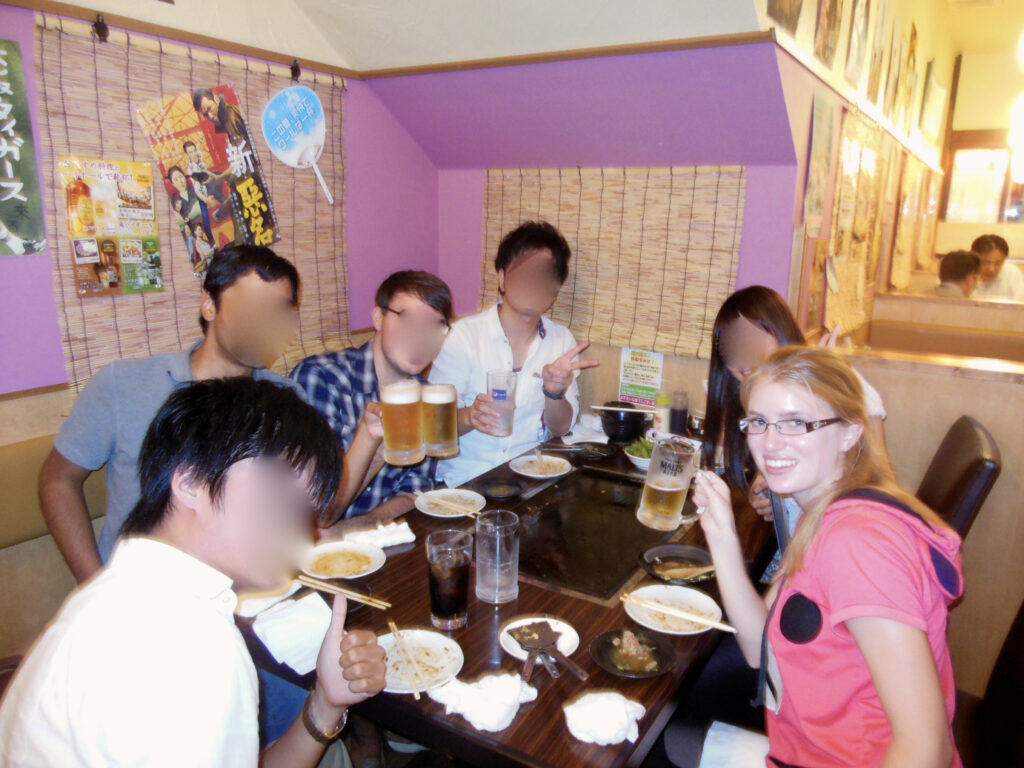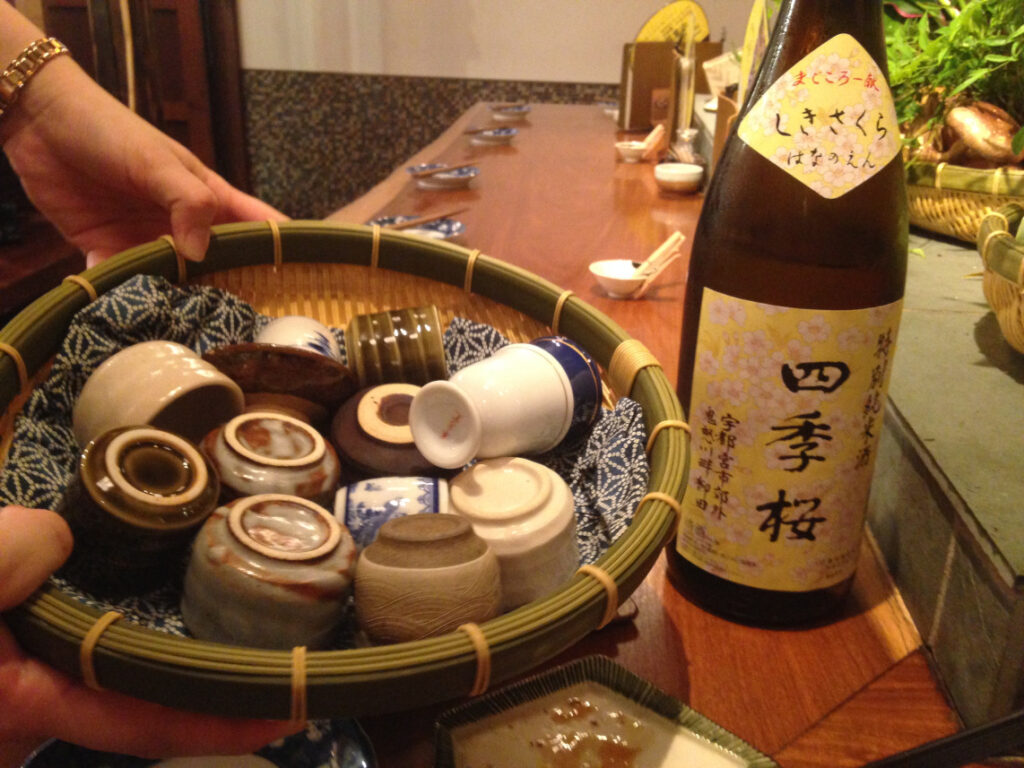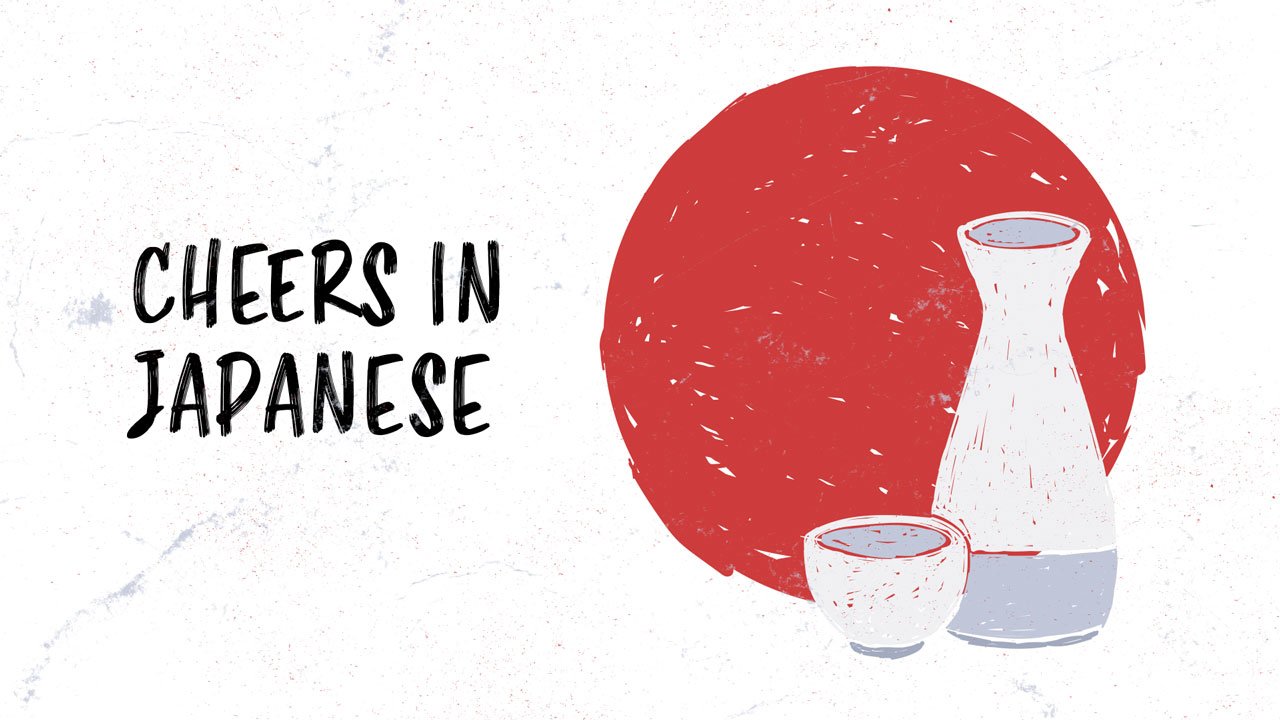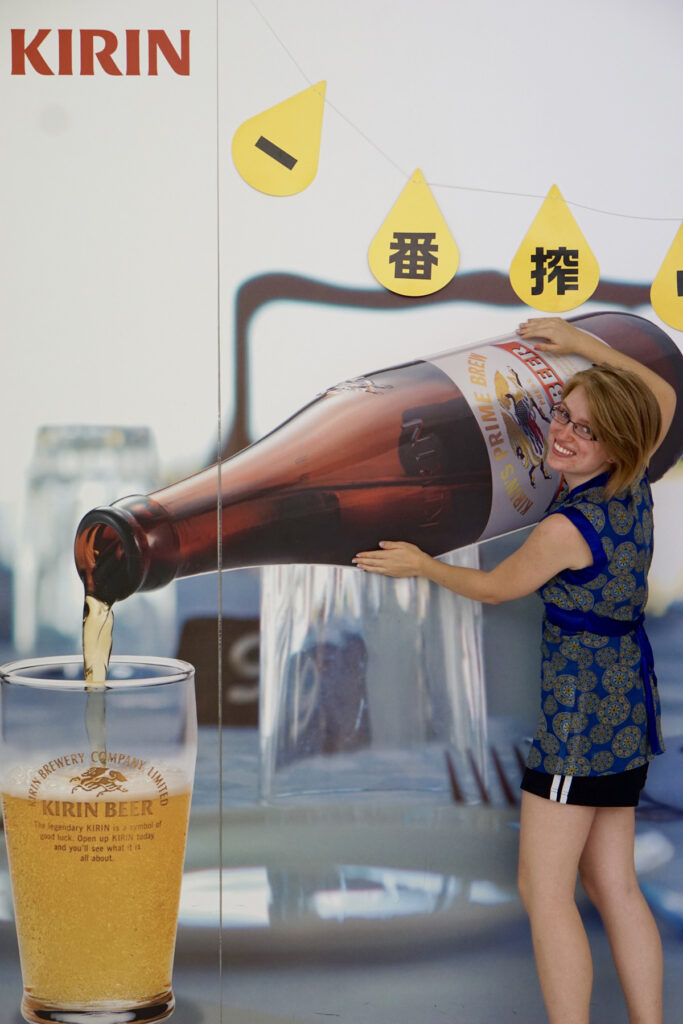How to Say “Cheers” in Japanese and Drink Like a Local
While you’re learning Japanese or in Japan, you’ll almost certainly need to say “cheers” in Japanese.
This is because alcohol is everywhere in Japan, and the Japanese people love to have reasons to give a toast!
In Japan, it’s incredibly common to go to a pub (or izakaya) after work or to meet friends at a swanky new cocktail bar in the city. In fact, there are even all-you-can-drink specials at many restaurants, pubs, and karaoke bars! (More on this later, of course!)
Don’t drink? Don’t worry! There are plenty of alternatives for you, too.
I lived in Japan for several years, speak the language fluently, and will be your cultural guide for this article. So let’s dive into how to say “cheers” in Japanese and some drinking culture and etiquette that will make your friends say, “Sugoi!” (That’s “amazing,” by the way!)
Table of contents
Japanese Phrases for “Cheers”
While there is one standard phrase for “cheers” in Japanese, you actually have a few options! Here are some phrases you can use to spice up your vocabulary for different occasions.

Here’s me with some university friends out for a drink in Japan, back in the day!
Kanpai (乾杯): The Go-To Cheers
English: Bottoms up!
Usage: When everyone’s drinks are ready, hold up your glass and join in the chorus of “kanpai!” This is your basic, everyday cheers. The phrase literally means “dry the glass,” but don’t worry – nobody expects you to down your drink in one go (unless you want to).
Otsukare-Sama Desu (お疲れ様です): Recognition of Hard Work
English: Good job today! / Thanks for your hard work!
Usage: This is perfect for those Friday night office parties. It acknowledges the effort everyone’s put in. Imagine clinking glasses after a long week and showing appreciation for your team’s hard work – this phrase adds that special touch. (Fun fact: This is often a common greeting among adults meeting after work. They’ll often say this instead of other ways to say “hello” in Japanese!)
Alternatively, you could also use otsukaresama deshita (お疲れ様でした). This is the above conjugated into the past tense. Its usage is similar to the previous one. But with a past tense vibe, it’s as if the hard part is over, and now it’s time to relax. This one’s perfect as the party starts winding down, and you’re on your last few drinks, sharing stories of the week’s battles.
Both of these are the formal form of the phrase. If you want to make it more casual to use among friends and other people you share close bonds with, just say otsukaresama (お疲れ様).
Omedetou Gozaimasu (おめでとうございます): Celebrating Victories and Milestones
English: Congratulations!
Usage: Got something to celebrate? A promotion, a birthday, or perhaps a friend’s engagement? This is your word. It’s versatile and can be used in most happy occasions when you’re raising a toast to good news.
Omedetou gozaimasu is the formal form of this cheers. To use it in casual settings, you can just say, Omedetou (おめでとう).
Banzai (バンザイ): A Cheer with Historical Roots
English: Live 10,000 years!
Usage: This is more than just a cheer; it’s charged with historical spirit. But be cautious with this one: it can have military connotations as it was used as a war cry in support of the Emperor. You probably won’t come across this one all too much, but you might see it used during moments of high excitement or in very significant celebrations.
Dos and Don’ts of Drinking in Japan
Okay, so now we know some things to say during toasts in Japanese! What else should we do to integrate ourselves into Japanese drinking culture?
If you’re just grabbing some drinks with friends, it’s much more casual and flexible. But if you’re going out drinking in a formal setting, such as with coworkers or at a business dinner, you’ll want to be aware of this etiquette!
- Do Order the Same First Drink: It’s all about unity. Starting with about same drink, usually beer or sake, is seen as a nod to group harmony. More practically, it makes the server quicker in delivering your drinks so you can all toast and start drinking more quickly. You’ll usually be given a choice, such as beer or oolong tea, so just choose which one strikes your fancy in the moment. You can get whatever you want later.
- Do Wait for the Toast: Don’t start sipping (or chugging, I’m not judging) before everyone’s drinks are delivered, because there might be a quick toast! Gauging the moment before everyone sips is crucial. If in doubt, see what everyone else is doing.
- Do Pour for Others: Especially if they’re older or of higher social status. It’s a way of showing respect and building camaraderie. Pour for yourself last.
- Don’t Fill Your Own Glass: Let someone else do it, and be ready to return the favor. If you’re done drinking, leave your glass full so no one is tempted to pour more for you.
- Don’t Toast with Water: For goodness’ sake (or sake‘s goodness), never toast with water. It’s associated with rituals for the departed and can be a big faux pas. Stick with non-alcoholic options if you’re not imbibing.
What to Drink in Japan
Whether you drink alcohol or not, you can give a cheers in Japanese with a variety of drinks! Here are some of the most popular ones.
Popular Alcoholic Drinks in Japan
Nihonshu (日本酒)
Commonly referred to as “sake” outside of Japan, this rice wine is both traditional and versatile. It can be enjoyed warm or cold, and pairs beautifully with a wide range of Japanese dishes.
Fun fact: Nihonshu (日本酒) literally means “Japanese alcohol,” and sake (酒) (pronounced “sa-kay,” by the way, not “sa-kee”) is a generic word for any type of alcohol. You’ll notice the kanji character is the same, although the pronunciation is different!
Remember, you’ll be served sake in a small glass reminiscent of a shot glass, but absolutely do not down it in one go! Sake is brewed like a beer, but sipped like a wine.

Sake will come in a bottle, but you drink it in tiny cups!
Beer (ビール)
Beer (biiru, ビール) is immensely popular in Japan, with local brews like Asahi, Sapporo, and Kirin leading the charge. It’s often the drink of choice at the start of an evening out. The standard beer in Japan is the lager, and in my opinion, they’re all pretty good!
Shochu (焼酎)
A distilled spirit typically stronger than sake, shochu is made from ingredients like barley, sweet potatoes, or rice. It can be enjoyed neat, on the rocks, or mixed with water or flavored drinks. (I often liken it to Japanese vodka.)
Umeshu (梅酒)
This sweet and tangy plum wine is a favorite among those who prefer something on the sweeter side. It can be served on its own or with soda for a refreshing spritz.
Whisky (ウィスキー)
Japanese whisky (wisukii, ウィスキー) has gained international acclaim in recent years. Enjoy it neat, with a splash of water, or as a highball mixed with soda.
Popular Non-Alcoholic Drinks in Japan
Amazake (甘酒)
A traditional sweet drink made from fermented rice, amazake is often alcohol-free and frequently consumed at festivals or as a healthy winter warmer. Sometimes it does have a low level of alcohol in it, though, so watch out if that concerns you.
Oolong Tea (ウーロン茶)
Oolong tea (uuron cha, ウーロン茶) is a classic non-alcoholic option that’s great for those wanting to join in with the rounds but not drink alcohol.
Calpis (カルピス)
Calpis (karupisu, カルピス) is sweet and tangy milk-based beverage you can enjoy straight or mixed with soda for a fizzy treat.
Mocktails and Non-Alcoholic Beer
Many Japanese bars are now offering creative mocktails, allowing non-drinkers to enjoy the flavors of popular cocktails minus the booze.
And yes, non-alcoholic beer has existed in Japan long before it became popular in the West! You can still clink cans of zero-alcohol beer with your friends, and nobody’s the wiser.
To find non-alcoholic versions of popular drinks, ask for noo arukooru (ノーアルコール) options.
Safely Navigating: Japan’s Drinking Laws
On that note, let’s talk about drinking laws in Japan. These might be somewhat familiar if you are, say, British, but very different if you are American. Here are some things to note:
Japanese Drinking and Driving Laws
Japan is strict about drinking and driving. Just don’t do it. Essentially, drinking and driving in Japan is classified as having even a swig of alcohol and driving a car or riding a bicycle (yes, you heard me right!). Here’s the lowdown:
- Zero-Tolerance Policy: If you’re driving in Japan, even a tiny amount of alcohol in your system is a big no-no. The permissible blood alcohol content (BAC) is almost zero (0.03%, to be exact), so it’s best to either not drink at all or plan alternative transport. This is one reason why non-alcoholic options are so popular.
- Severe Consequences: Getting caught drinking and driving in Japan can lead to severe penalties, including heavy fines, prison time, and even loss of employment. It’s a serious matter, so always keep it in mind after any merry gathering.
- Daijoubu Driver: If you do find yourself needing to get home after a few drinks without public transportation options, consider using a daikou (代行) service — a substitute driver who takes you and your car home safely. It’s a widely used and much-appreciated service in Japan that helps everyone stay safe on the road. Of course, you can also call a taxi or an Uber as well if you don’t need to pick up your car later.
Japanese Public Drinking Laws
Japan has a pretty chill approach to public drinking compared to some other countries, but it’s still all about the context. So, whether you’re planning a hanami picnic under the cherry blossoms with a chilled can of biiru or hoping to enjoy a swig of sake by the riverside, here’s the lowdown on Japan’s public drinking laws.
- No Open Container Laws: Japan doesn’t have open container laws like some countries do. This means you can legally enjoy a drink just about anywhere outside your favorite izakaya or sake bar.
- Public Places Are A-OK: Parks, streets, and even some public transport spaces don’t frown upon the casual drinker. It’s not uncommon to see folks toasting away during outdoor festivals or enjoying a cold one on a leisurely bench.
- Respect Is Paramount: Just because you can drink in public doesn’t mean you should be swinging from the lampposts. It all circles back to respect—a central tenet of Japanese culture. Be mindful of your surroundings and the people around you.
- Nighttime Nuances: While day-drinking in public can be pretty lax, sometimes local rules might tighten up after dark. Certain areas, especially in entertainment districts, might have their own guidelines or curfews for drinking in public to maintain peace and order.
- Event-Specifics: At concerts, sports events, or festivals, follow the vibe and the rules. Some will allow drinking; others won’t. Look around, see what others are doing, and when in doubt, ask —a simple Osake wa daijoubu desu ka? (お酒は大丈夫ですか, “Is drinking [alcohol] allowed here?”) will do the trick.
- Convenience Reality Check: Ever noticed those chilled alcohol sections in Japanese konbini (convenience stores)? They aren’t just for home use. It’s totally normal to grab a drink there and enjoy it outside, as long as you throw away your trash where it belongs.
Nomihoudai (飲み放題): Japan’s All-You-Can-Drink Phenomenon
Okay, so we’ve gotten through the legal bits–now for a fun part!
Nomihoudai (飲み放題)–often written as “nomihodai,” alternatively–translates to “all you can drink,” and it’s exactly that—a set price for unlimited drinks over a set time period, usually two to three hours. You are usually given a special menu of what you’re allowed to choose from (these usually include beer, white and red wines, sake, a few basic cocktails, and a few non-alcoholic options), and you order your drinks from the server. It’s great for groups and partygoers looking for a cost-effective way to enjoy a night out.
Many izakayas (Japanese pubs) offer nomihoudai as part of their service. It’s a fantastic way to try different drinks without worrying about the bill racking up.
Just because it’s all you can drink doesn’t mean it should be all you can stomach. Pace yourself and know your limits to avoid any negative consequences — such as a tough morning after or getting too rowdy in a culture that values decorum. To be honest, I’ve gotten more badly drunk in Japan than anywhere else in my life thanks to these.
You can also usually combine a nomihoudai with a tabehoudai (食べ放題), or an “all you can eat.” This is a great way to try out a variety of Japanese dishes. Some places offer both to make an ultimate dining experience where you can savor endless dishes alongside a seemingly infinite river of drinks.
Kirin is one of the most popular beer companies in Japan. But they don’t usually come this big!
A Toast to Language Learning
So, there’s your crash course on “cheers” in Japanese!
Embracing these terms and actions isn’t just about enjoying a drink; it’s about connecting deeper with a culture that values subtlety and shared experiences. And who knows? Maybe your next step is to pick up a few more Japanese phrases and deepen your understanding of this rich language.
So, ready your glass, practice your best kanpai, and here’s to Japanese language and culture – may they always be as delightful as a well-timed toast among friends! 🥂




Social